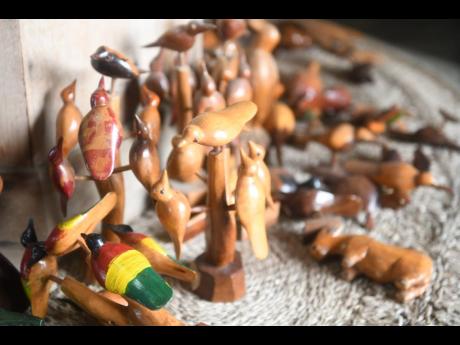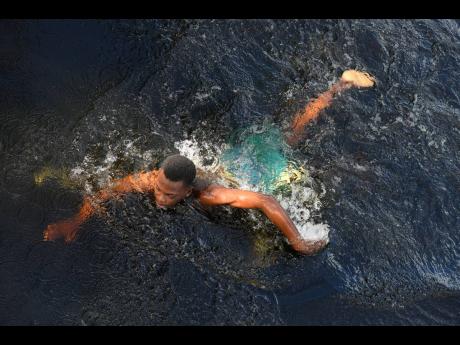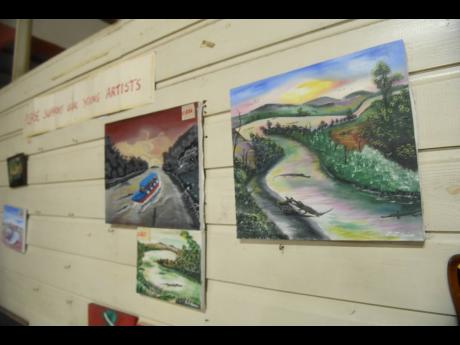Black River Safari providing an outlet for artists
Jay Jay Senior started painting and sculpting at the age of nine, none of which was done with any guidance or formal training. He painted on paper for the fun of it, art that he described as distasteful and horrible.
“Those time I never really took it seriously. I made a mess of it,” he said, reminiscing about the beginning of his painting journey as a self-taught artist, while still a child. It was something he did out of natural interest and expression, not because he was told to, or was trying to make a profit from it. Sculpting started with just a knife and graffiti on trees. After a short while, “anything that comes to mind I just cut it out into the tree,” shared the 30-year-old. Those habits helped him to chisel out his passion and he made his first profit at 13 with a painting of a lion, which, like every other piece, he had no thoughts of selling.
Since then, Senior has kept working to perfect his passion, which has been transformed into his bread and butter. His paintings, carvings and jewellery are sold along the streets of Mandeville, his home town. This was taken further when J. Charles Swaby, Mandeville native and founder and owner of the Black River Safari, introduced his work to tourists in 2004.
However, the support never rolled in until around 2006, when his pieces evolved to reflect the experience at the safari. The multitalented Senior has been selling paintings, pen holders, wall clocks, necklaces and bracelets, all made by him from local wood. He also produces accessories.
“It’s good selling there. I’m working on quite a few more pieces right now to send back down there,” shared Senior, explaining that this particular market has increased his earnings. Though things are slow now, the safari is still operational, not just for locals, as always, but they are still facilitating tourists who want a private boat tour.
With the items being priced in US dollars, the money received is inconsistent and sometimes unpredictable, but Senior, who also does cut stone work, said: “It benefits me greatly and I say ‘thank you’ to Mr Swaby for that, really.”
ONLY SOURCE OF INCOME
Hailing from the community of Breadnut Walk in St Elizabeth, Franklin Smith expresses similar gratitude as the safari gives him a market for his carvings. Being a carver for 30 years has taken him to Montego Bay, Ocho Rios and Negril to sell his work to craft vendors at wholesale price. “Mi lef’ down deh suh, for you naa get nothing off a dem. A dem a get the money off a it, so me prefer juggle dem inna di street. Mi get more food da way deh,” he said.
However, he continues selling his pieces at the J. Charles Swaby’s Black River Safari. “Dem no charge me, me just gwaan juggle,” said Smith, explaining that he has been selling there for 15 years. Smith has specialised in the Swallow-tailed hummingbird, turtles, pineapples, crocodiles and has added flair making the items as lamps. Smith told The Gleaner that for years carving has been the only source of income for him and his daughter, who is now 24 years old. “A dem thing deh send me daughter a school, eno. Her mother dead from she three months old.”
Bemoaning the fall in sales due to a dip in tourist arrivals, Smith told The Gleaner that he only made $500 that particular day from the sale of a small Swallow-tailed bird. “A just fare fi come a mi yard, and a beg me haffi beg the man fi buy it from me,” he lamented.
This was a struggle unheard of for the long generation of carvers. Previously, carvers from Breadnut Walk did not have hands to sell to people passing by in trains. Now, Smith’s work is among those waiting for purchase under a sign at the safari that pleads with the visitors to ‘support our local artists’.





